About the Gardens
In 2018, the Mount Vernon Governmental Center transformed its grass lawn into native perennial gardens. This included the installation of native trees, shrubs and meadow plants to enhance wildlife habitat, improve water infiltration and shade the buildings.
In addition to the gardens at the building entrances, there are several retrofitted bioretention facilities around the Governmental Center to capture and store stormwater. This includes enhanced wetland detention ponds planted with native species, like Joe Pye weed and Virginia sweetspire.
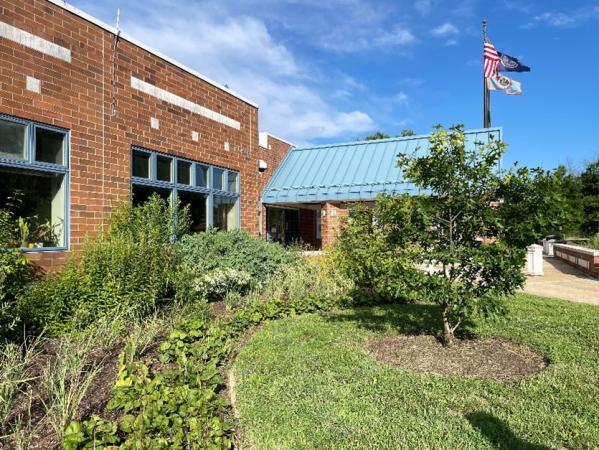
Native trees and shrubs were strategically planted to shade and cool the building in the summer, thus reducing energy costs.
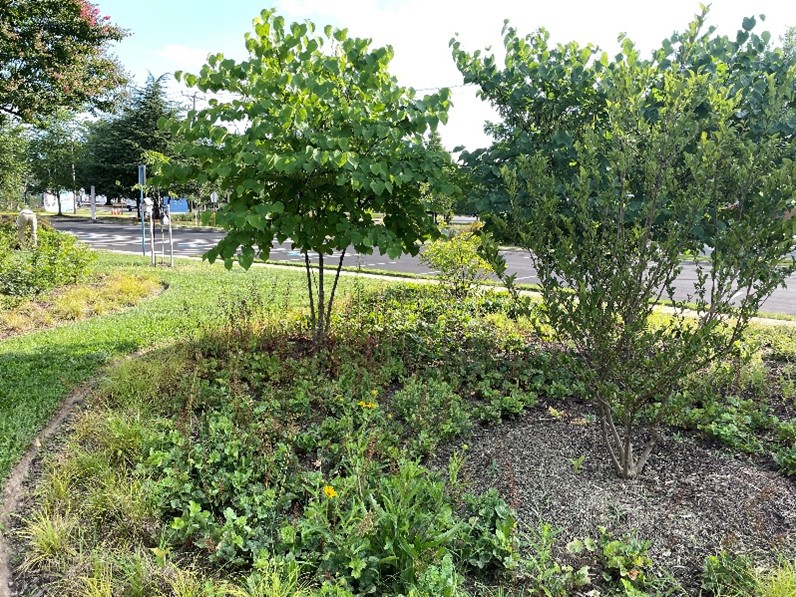
Redbud and downy serviceberry trees surrounded by native meadow plants provide optimal habitat for pollinators and other wildlife.
Showcasing the Value of Natural Landscaping
The Governmental Center’s emphasis on native plants reflects research showing that plants indigenous to this region are essential sources of food and shelter for native wildlife. In addition, native plants often outperform their non-native counterparts at decompacting soil, infiltrating water, and cooling the urban environment.
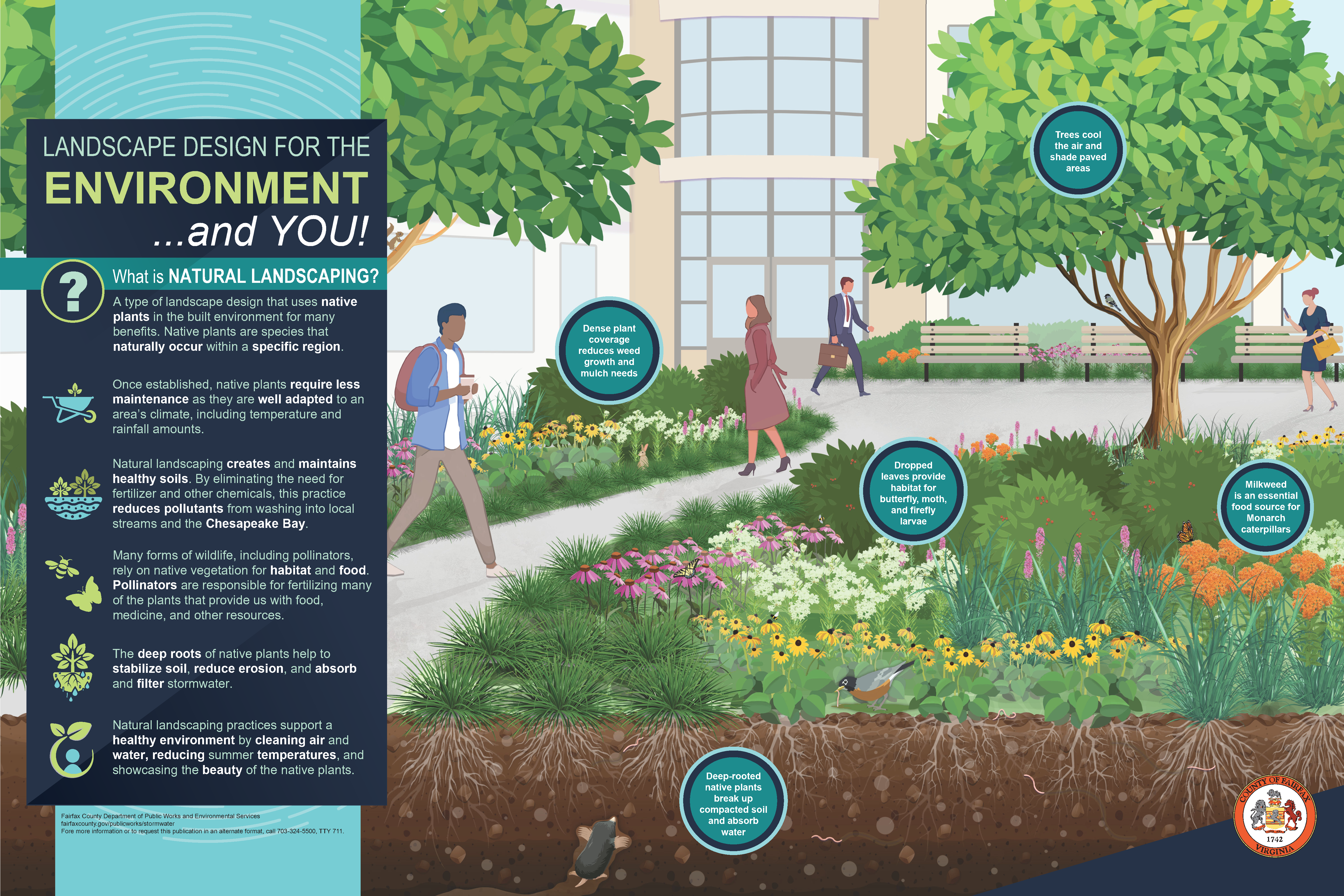
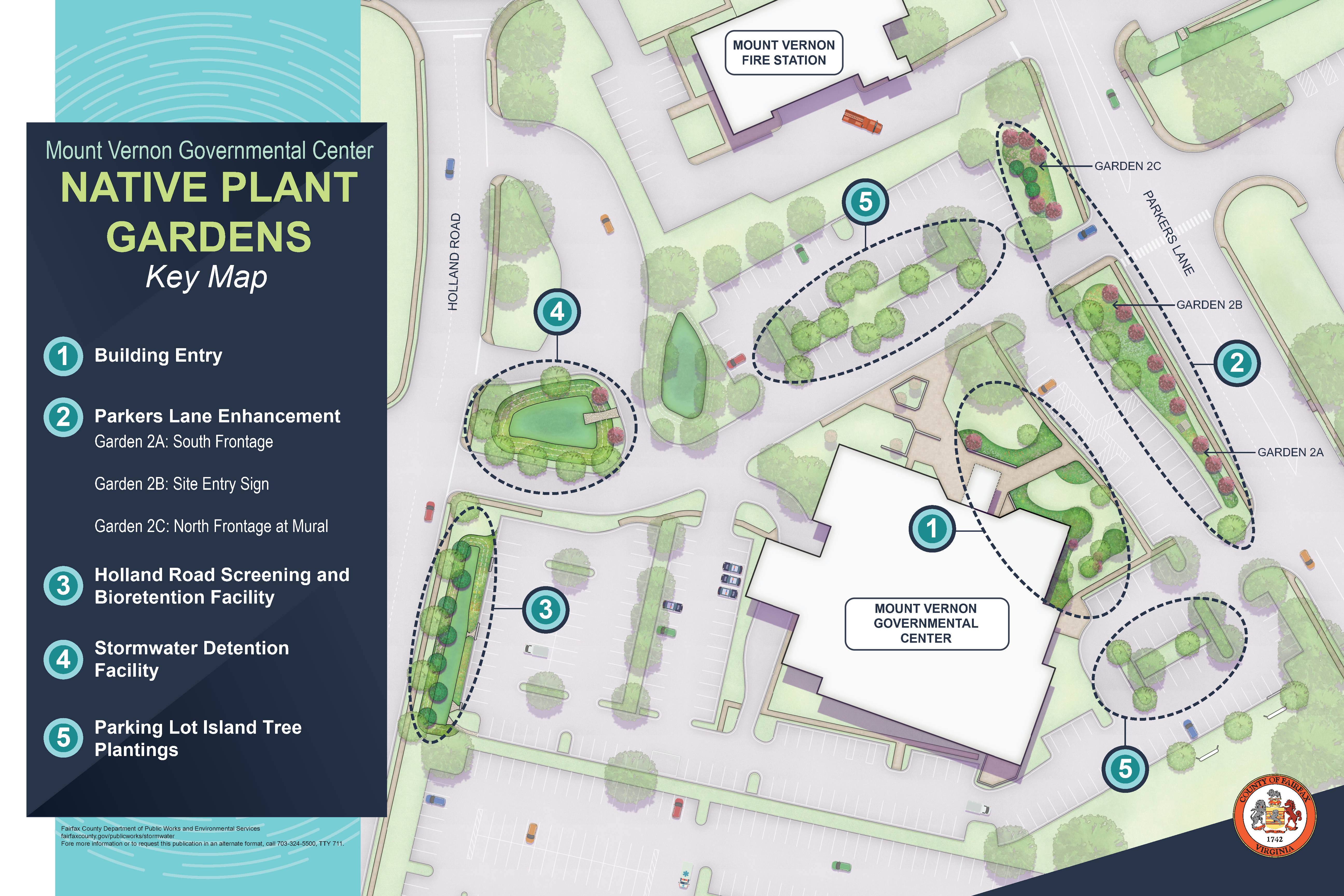
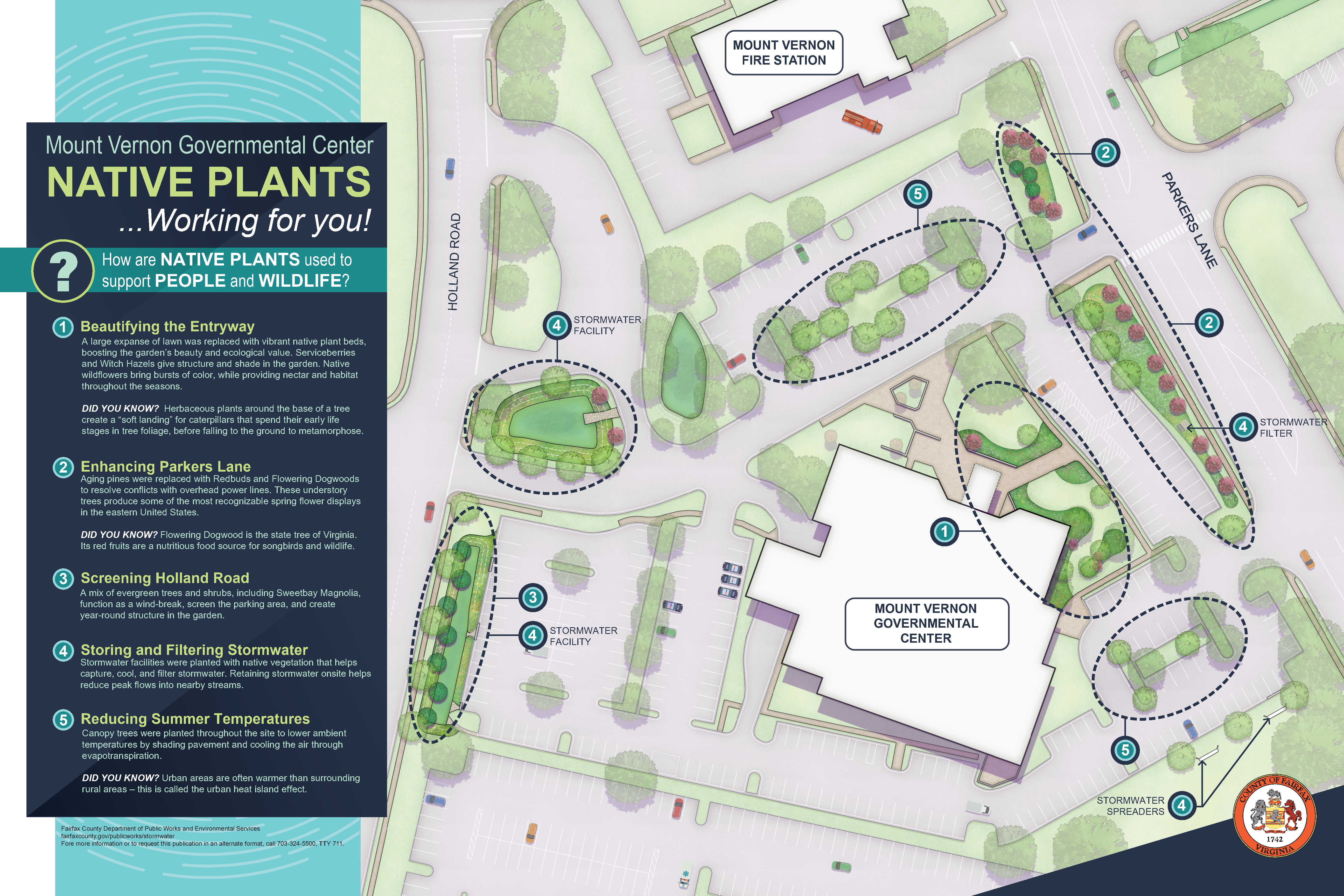
History of the Native Gardens
The Governmental Center’s transition to natural landscaping was spearheaded in 2018 by Cathy Ledec, who served as the Chair of the Fairfax County Tree Commission. This community-led effort was supported by the Fairfax Chapter of the Virginia Master Naturalists, the Audubon-at-Home Program, the Boy Scouts, and the Northern Virginia Soil & Water Conservation District. The Governmental Center’s natural landscaping was enhanced in 2022 through additional planting and the installation of bioswales.
The project was originally funded through Northern Virginia Soil and Water Conservation District's (NVSWCD) Conservation Assistance Program (CAP) grant, a plant grant from Earth Sangha and private donations.

